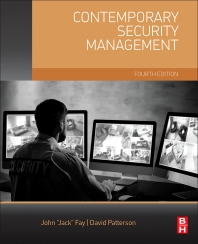Security dealers who participated in SDM’s 2016 Forecast Study believe their stiffest competition in 2016 will come from do-it-yourself security providers. DIY is an unfamiliar concept for most traditional dealers who specialize in professionally installed and monitored security systems. However, a new solution created by familiar industry names — RSI Video Technologies (manufacturer of Videofied) and USA Central Station Alarm Corp. — aims to take away that unfamiliarity with DIY, and is designed to help dealers be competitive even with the most popular DIY brands.
Their solution, DragonFly Security, is self-installed but professionally monitored — either in a traditional manner or as dispatch-on-demand. Video-verified alarms, generated by indoor or outdoor battery-powered cameras, qualify for priority police response. Users can see what is happening in real time and take action through an app on their smartphone. Users receive alerts as push notifications sent to either an iPhone or Android device. The user decides the outcome of each alert; after viewing the video clip, they can select dispatch-on-demand (dispatch can be canceled if necessary), dismiss the alarm, or disarm the system from the DragonFly app. The app also allows the user to capture a still image or video through a look-in feature.
What’s different is not the technology or the professional monitoring aspect, but the fact that DragonFly is an uncharacteristic business model for security dealers. USA Central’s participating dealers need to focus only on branding and marketing DragonFly Security. They don’t sell/ship the products, install, or monitor them. (Dealers with their own central station who wish to monitor DragonFly systems themselves may do so under a different plan.)
The e-commerce aspect of this program is unique for the dealer market. Participating dealers are given websites (they host and maintain) with redirects to the DragonFly platform. Consumers purchase the system through the website. Orders are fulfilled by RSI Video Technologies and shipped for free directly to the consumer.
No working capital is required of the dealer. USA Central provides the dealer’s DragonFly website; the consumer pays for the hardware online and installs it themselves; USA Central also provides the DragonFly smartphone app and the professional DragonFly monitoring. Dealers promote sales and collect the RMR.
There are two monitoring plans: basic and premium. Basic monitoring is priced at $10 and every video alert (indoor and outdoor) is reviewed by the user. In the event of a real threat, the user clicks “Dispatch” to send the alarm to the central station for professional dispatch and priority response. Premium monitoring, priced at $30, adds the ability to automatically send indoor alarms to the central station for review/dispatch in the event the user is busy or unavailable. With each of these business models, the dealer retains the lion’s share of the RMR.
The hardware is priced at $199, $299 and $399 (indoor system, outdoor system, indoor and outdoor systems, respectively). The Indoor DragonFly Kit, for example, comes with everything needed including a Hub communicator with power supply and cables, the wireless Indoor MotionViewer camera with batteries, and the serial number needed to link the user’s smartphone. The Ethernet connection can be upgraded to cellular and/or Wi-Fi.
“I was just at the California Alarm Association event and the dealers are very much feeling squeezed by the do-it-yourself model,” observed Keith Jentoft, president of RSI Video Technologies, Vadnais Heights, Minn. “Bart Didden’s DragonFly is not a traditional alarm system; contacts don’t exist, sirens don’t exist, keypads don’t exist. The concept is to keep it super simple with battery-powered cameras. That’s played well for the millennial crowd. The community part — getting the neighborhood involved — works because we have such a strong outdoor product. Sharing outdoor alerts creates safer neighborhoods while preventing neighbors getting alerts on indoor cameras.”
Jentoft is referring to the ability for DragonFly users to create a virtual neighborhood of protection by adding family, friends and trusted neighbors to the system as either users or followers though a three-level hierarchy. The app invitation to become a user or follower then becomes a marketing tool to increase the dealer’s subscriber base.
The National Sheriffs’ Association has endorsed the technology used in DragonFly Security for more than five years, Jentoft said. And another well-known person is featured in connection with DragonFly: Jeffrey Zwirn, president of IDS Research & Development, Tenafly, N.J. Zwirn, a highly accredited professional in the security industry and a leading expert witness, is featured on the website speaking about the system, its limitations, and considerations when selecting a DIY system.
Bart Didden, president of USA Central Station Alarm Corp., Port Chester, N.Y., a company which among other things, provides the DragonFly business-in-a-box to its alarm dealers, said there are numerous potential markets for the DIY solution, including condominiums and apartments, university dorms, even construction sites.
“While it was primarily designed for residential, it can also serve a very useful role in the small commercial application,” Didden said. “Remember, this system is not a replacement for a professionally installed alarm system. It’s more of a video system that gives a lot of the control to the homeowner or business owner. It enters the Dropcam market, because the consumer at any time through their permissions can view the video whenever they want. It’s more than a Dropcam, but it’s not a full-function alarm system and there is no fire aspect to it, no door switches. It’s motion-detected/-activated cameras that have illuminators,” he described. USA Central Station was founded in 1982 and Didden said it was first in the country to offer Videofied products, which is the technology used in DragonFly.
Jentoft concurs, “DragonFly is not trying to be a self-install traditional alarm system. It’s a security system. It’s really not even the same customer base. It’s targeting an incremental customer base. We’re going after the people who would be a Nest, Canary, Piper customer. It’s really a different target audience,” he said.
For information, visit the holding site for DragonFly, www.bartsproject.com.









